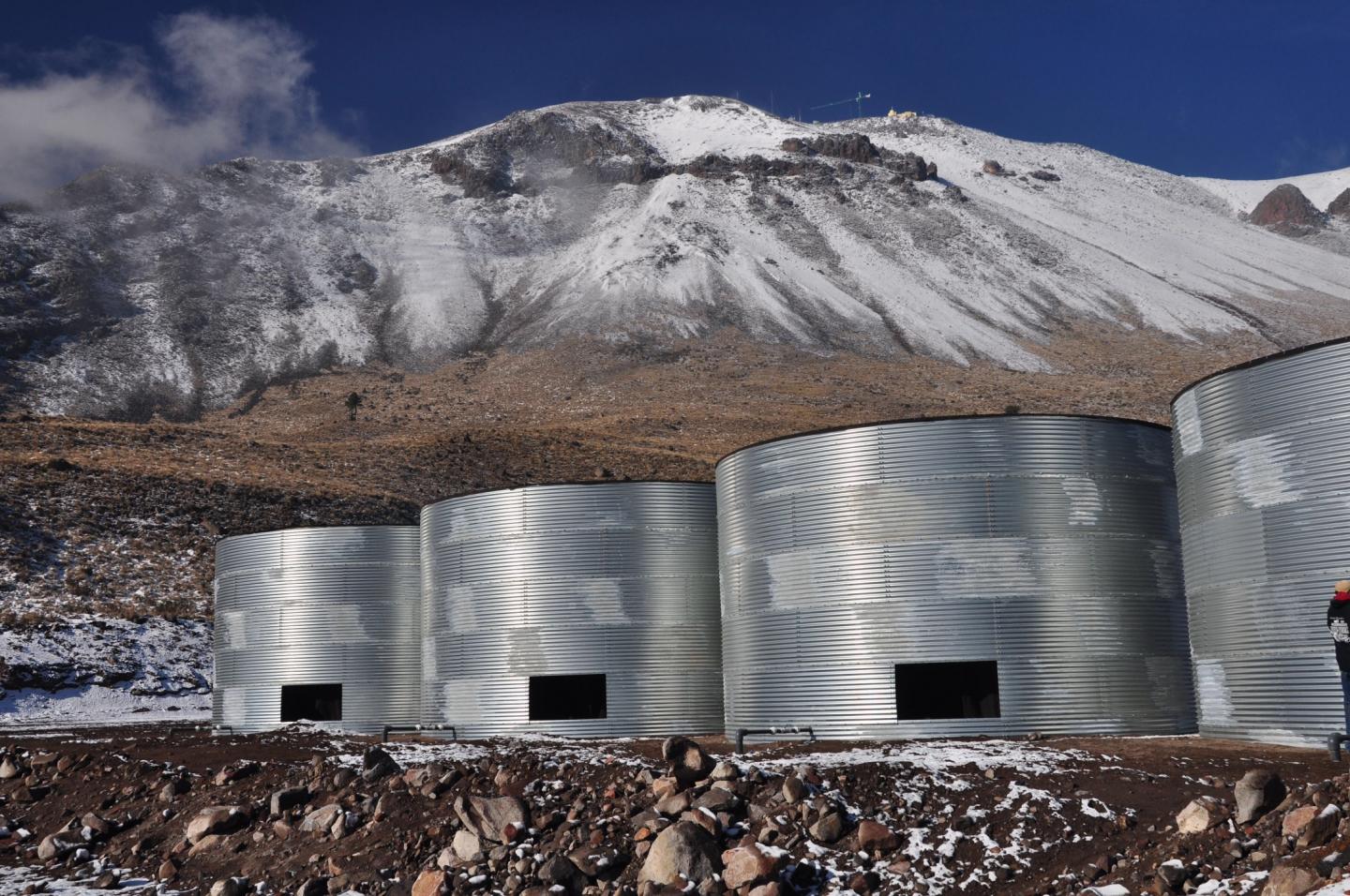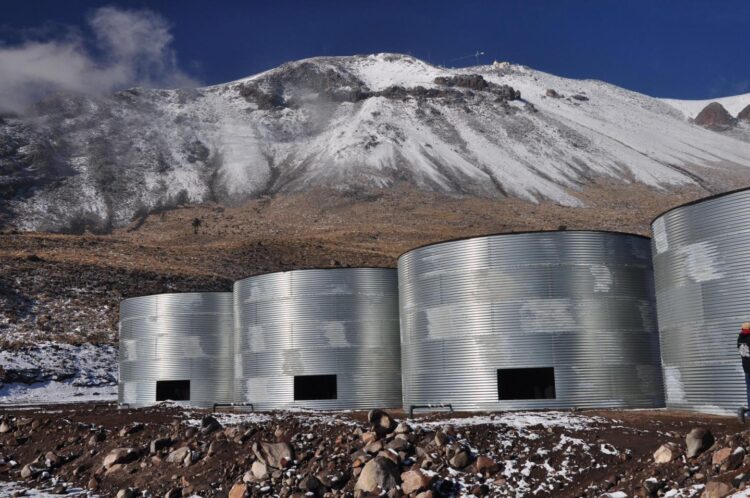An ‘accidental discovery’ confirms what simulations show

Credit: Jordan Goodman, HAWC Collaboration (NSF.gov)
LOS ALAMOS, N.M., April 28, 2021–Analysis of data from a lightning mapper and a small, hand-held radiation detector has unexpectedly shed light on what a gamma-ray burst from lightning might look like – by observing neutrons generated from soil by very large cosmic-ray showers. The work took place at the High Altitude Water Cherenkov (HAWC) Cosmic Ray Observatory in Mexico.
“This was an accidental discovery,” said Greg Bowers, a scientist at Los Alamos National Laboratory and lead author of the study published in Geophysical Research Letters. “We set up this system to study terrestrial gamma-ray flashes – or gamma-ray bursts from lightning – that are typically so bright you can see them from space. The idea was that HAWC would be sensitive to the gamma-ray bursts, so we installed a lightning mapper to capture the anatomy of the lightning development and pinpoint the lightning processes producing them.”
The team, including Xuan-Min Shao and Brenda Dingus also from Los Alamos, used a small, handheld particle detector, expecting that a terrestrial gamma-ray flash would generate a clear gamma-ray signal in the small particle detector.
“Our system ran for almost two years, and we saw a lot of lightning,” said Bowers. But during those storms, they did not observe anything that looked like terrestrial gamma-ray flashes. “We did, however, see large count-rate bursts during clear, fair-weather days, which made us scratch our heads.”
HAWC data gathered during these times showed that, in every case, the large array that comprises HAWC had been overwhelmed by extremely large cosmic-ray showers–so large that the Los Alamos researchers couldn’t estimate their size.
UC Santa Cruz collaborator David Smith found that these fair-weather bursts had previously been observed by scientists in Russia, who called them “neutron bursts,” and determined that they were the result of neutron production in the soil around the impact point of cosmic ray shower cores.
Previous work that simulated these events had only considered hadrons – a type of subatomic particle – in the core of the showers. In addition to hadrons and other particles, cosmic-ray shower cores also contain a lot of gamma rays.
For this work, William Blaine, also of Los Alamos, simulated large cosmic ray-showers, and included both hadrons and gamma rays. “We were able to match our observations with the simulations,” said Bowers. “We found that the gamma rays produce the same type of neutron burst as the hadrons.”
This study suggests that any natural phenomena that produces a beam of gamma-rays pointed towards the ground (such as downward terrestrial gamma-ray flashes), could produce a similar “neutron burst” signature. This is significant for future terrestrial gamma-ray flash observation modeling efforts.
“It tell us that you can’t just model the gamma rays hitting your detector, you’ll also have to consider the neutron burst that’s happening nearby,” said Bowers.
The HAWC Observatory comprises an array of water-filled tanks high on the flanks of the Sierra Negra volcano in Puebla, Mexico, where the thin atmosphere offers better conditions for observing gamma rays. When gamma rays strike molecules in the atmosphere they produce showers of energetic particles. When some of those particles strike the water inside the HAWC detector tanks, they produce flashes of light called Cherenkov radiation. By studying these Cherenkov flashes, researchers reconstruct the sources of the showers to learn about the particles that caused them.
###
Paper: Bowers, G. S., Shao, X.?M., Blaine, W., Dingus, B., Smith, D. M., Chaffin, J., et al. (2021). Fair weather neutron bursts from photonuclear reactions by extensive air shower core interactions in the ground and implications for Terrestrial gamma?ray flash signatures. Geophysical Research Letters, 48, e2020GL090033. https:/
Funding: Los Alamos Laboratory Directed Research and Development Program, U.S. National Science Foundation, U.S. Department of Energy Office of High-Energy Physics
About Los Alamos National Laboratory (http://www.
Los Alamos National Laboratory, a multidisciplinary research institution engaged in strategic science on behalf of national security, is managed by Triad, a public service oriented, national security science organization equally owned by its three founding members: Battelle Memorial Institute (Battelle), the Texas A&M University System (TAMUS), and the Regents of the University of California (UC) for the Department of Energy’s National Nuclear Security Administration.
Los Alamos enhances national security by ensuring the safety and reliability of the U.S. nuclear stockpile, developing technologies to reduce threats from weapons of mass destruction, and solving problems related to energy, environment, infrastructure, health, and global security concerns.
LA-UR-21-23994
Media Contact
Laura Mullane
[email protected]
Original Source
https:/
Related Journal Article
http://dx.





